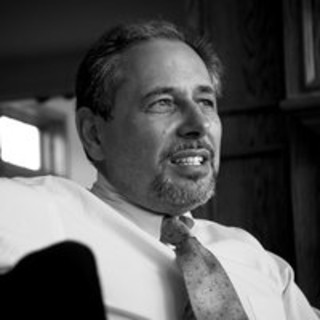After a 2-year hiatus the AAN has resumed its annual congress in full force on April 2-7. Almost 7000 participants and 2400 abstracts underscored the desire to return to an in- person presence, with presentations in diverse formats. All abstracts were characterized by a high scientific level, and many of them will be reported later in the year in the best neurology journals.
The large attendance after the COVID-19 suspension emphasized the desire for a face-to-face format, to exchange ideas, meet old colleagues, and make new connections in a convivial environment so essential for creativity and motivation! The opening meeting called the Great Neuro Reunion seemed to underscore the feeling that it was time to leave behind the in-vitro Zoom format for an in person or more appropriately in vivo experience!
Nothing has changed: rigorous organization, a large convention center, a convivial atmosphere, a solid scientific program covering common clinical issues for the practicing neurologist, to new promising scientific approaches to diseases and management of the business of neurology.
And everything has changed: a separate registration center across the street from the conference center, different colored lanyards to share one’s preferences regarding COVID-19 precautions measures such as distancing and handshakes, a wrist band to verify compulsory vaccination status prior entering the convention center and always wearing a mask. New High-energy Learner Engagement Centers were set up at the conference center where exciting new offerings were designed to foster collaborative learning, offer unique education delivery methods, and spark engaging conversations, coaching, small group dialogue sessions, and networking opportunities across career stages.
A virtual option is still available on April 24-26: of the 11 plenary sessions, 7 are face-to-face in Seattle and 4 only virtual; for the 200 courses, 160 are face-to-face in Seattle and 40 only virtual.
As in the past years, the conference covered a variety of topics from practical clinical topics to novel research approaches for neurological diseases. Plenary sessions, courses and abstracts covered new therapeutic developments, clinical applications of basic and translational research, and innovative technical developments.
Plenary sessions addressed either topical issues or controversial ones and were followed later in the day by informal “fireside chats” where the morning speakers interacted with the attendees in a less formal setting.
One interesting plenary session was the one addressing “Controversies in Neurology.” The following question was debated: Should patients with a single seizure be evaluated and treated as if they had epilepsy?” Dr. Gregory Cascino of Mayo Clinic discussed the position that patients with one seizure should be diagnosed and treated as if they had Epilepsy, mostly due to the 50 % reoccurrence at two years. On the contrary, Dr. Anteneh Feyissa of Mayo Clinic pointed out that early treatment of a single seizure does not change long term impact at five years. Many other valid points were made in the debate which was spirited and at times filled with irony. There was a consensus on the need for biomarkers of disease to guide length of treatment and predictive models to assess risk for recurrence.
Another question addressed in a plenary session was: “Aducanumab: to prescribe or not Prescribe? Aducanumab, an FDA recently approved anti βamyloid medication for Alzheimer disease, was at the center of the debate. On one side of the issue Dr. Alireza Atri of Banner Health made the point that Aducanumab should be prescribed despite the controversy surrounding its lack of efficacy and side effect profile since there is a clear effect on reducing beta-amyloid and a similar effect on tau protein. Dr. David Knopman of Mayo Clinic sustained the opposite point of view since postdoc statistical analysis are unreliable predictors of benefits, and that there is no evidence that reducing beta amyloid may affect a positive clinical response. Both agreed the real-world use of the drug is a challenge and that similar drugs seeking FDA approval in the next years or so may help resolve this debate.
Many other hot topics relevant for the clinical practitioner were discussed such as COVID-19 effects on the brain, the clinical features of long COVID-19, the diagnosis and treatment of coma and whether anticoagulation should be restarted after cerebral hemorrhage for secondary stroke prevention in Atrial fibrillation. Dedicated Plenary presentations focused on preliminary results of large national drug Trials for MS (Ultimate I and II), cervical dystonia (ASPEN 1), Myasthenia Gravis (CHAMPION MG), Chronic Traumatic brain injury (Stemtra), endovascular treatment for acute ischemic stroke (MR CLEAN NO IV), glioma (ONC201), and Rett syndrome (LAVANDER).
Two innovative approaches to better understand neurological degenerative disease were of great interest. Dr. Miranda E. Orr reported on her work on cellular senescence which has emerged as a promising target for degenerative neurological disease. Senescent cells accumulate with age where they notoriously secrete molecules (secretome) that contribute to chronic tissue dysfunction and disease. The removal of senescent cells improves brain structure and reduces beta-amyloid and tau burden. She reviewed evidence for senescent cell accumulation in the human brain, strategies for senescence-targeting trials specific to AD, approaches to detect senescent brain cells in biofluids, and summarized the goals of the first senolytic trials for the treatment of AD: an open-label clinical trial pilots an intermittent senolytic combination therapy of dasatinib plus quercetin in older adults with early-stage Alzheimer’s disease. Removing neurons in a degenerative disease is certainly a new approach to see.
A second innovative approach to degenerative disease was reported by Dr. Humberto Mestre on his work looking at the glymphatic system. This concept along with the discovery of meningeal lymphatic vessels have, in recent years, highlighted that fluid is directionally transported within the central nervous system. This approach can explain the accumulation with age or proteins toxic to the brain such as tau beta-amyloid and alpha-synuclein. Imaging studies, as well as manipulations of fluid transport, point to a key role of the glymphatic-lymphatic system in clearance of amyloid-β and other proteins. As such, the glymphatic-lymphatic system represents a new target in combating neurodegenerative diseases. Not unexpectedly, manipulating a “plumbing” system in the brain to increase elimination of neurotoxic proteins in the brain has stirred controversies.
After the forced suspension due to COVID-19, this 74th annual AAN conference continues to be the leader in Neurology meetings showing added vitality and resilience. This was my 37th AAN Meeting and will not be the last!
Dr. Antuono has no conflicts of interest.
Image by DrAfter123 / Getty







